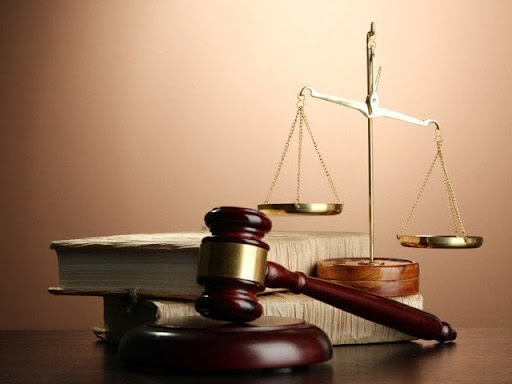The Supreme Court plays a pivotal role in the legal landscape of any nation. As the highest judicial authority, its primary function is to interpret and uphold the constitution, ensuring that laws and policies align with fundamental legal principles. This blog explores the Supreme Court’s influence in shaping the law, examining its responsibilities, historical significance, and enduring impact on society.
The Supreme Court’s Foundational Role
The Supreme Court is the final arbiter of legal disputes, providing clarity and uniformity in the application of laws. It serves as a guardian of constitutional principles, ensuring that legislative and executive actions do not infringe upon the rights and freedoms guaranteed by the constitution. This critical role underscores the importance of judicial independence, as the Court’s decisions often have profound implications for governance and individual liberties.
In many jurisdictions, the Supreme Court also has the authority to strike down laws deemed unconstitutional. This power of judicial review allows the Court to act as a check on other branches of government, fostering a balance of power that is essential in democratic systems. By scrutinizing the legality of statutes and executive actions, the Supreme Court ensures that the rule of law prevails over arbitrary governance.
Historical Context and Landmark Decisions
Throughout history, the Supreme Court has delivered landmark rulings that have shaped the trajectory of legal and social development. For instance, in the United States, the Supreme Court’s decision in Brown v. Board of Education (1954) marked a turning point in the fight against racial segregation. By declaring segregation in public schools unconstitutional, the Court not only advanced civil rights but also set a precedent for future rulings on equality and discrimination.
Similarly, the Indian Supreme Court’s decision in Kesavananda Bharati v. State of Kerala (1973) established the doctrine of the basic structure of the constitution. This ruling emphasized that certain fundamental aspects of the constitution could not be amended, preserving the integrity of democratic principles in the face of political challenges.
These cases highlight the Supreme Court’s ability to address societal issues through legal interpretations. By tackling contentious matters, the Court often becomes a catalyst for broader societal change, influencing public opinion and legislative agendas.
Interpreting the Constitution
One of the Supreme Court’s most challenging tasks is interpreting the constitution. Constitutional provisions are often broad and open to varying interpretations, requiring the Court to navigate complex legal and ethical questions. This interpretative function allows the Court to adapt constitutional principles to contemporary realities, ensuring that the law remains relevant in a changing society.
For example, the interpretation of the First Amendment in the United States has evolved over time, reflecting shifts in societal attitudes towards free speech and expression. Similarly, the concept of equality has been expanded through judicial interpretation, addressing issues such as gender discrimination and LGBTQ+ rights.
However, this interpretative power also exposes the Court to criticism. Detractors argue that judicial activism—where judges are perceived to create rather than interpret law—can undermine democratic processes. Balancing the need for legal evolution with respect for legislative authority remains a delicate task for the Supreme Court.
The Impact of Supreme Court Decisions
The Supreme Court’s rulings often extend beyond legal boundaries, influencing political, economic, and social spheres. For instance, decisions on issues like abortion, same-sex marriage, and climate change have sparked nationwide debates, reflecting the Court’s role as a key player in shaping societal values. Additionally, some decisions may indirectly affect niche areas, such as offshore injury cases, by setting legal precedents or interpretations that trickle down into specialized legal fields.
Moreover, the Supreme Court’s decisions can have a ripple effect, influencing legal systems in other countries. For instance, the landmark judgment in Roe v. Wade (1973) not only transformed abortion rights in the United States but also inspired similar legal debates globally. Likewise, rulings on privacy and data protection have set benchmarks for emerging legal frameworks in the digital age.

Challenges and Criticisms
Despite its critical role, the Supreme Court is not immune to challenges and criticisms. One significant concern is the perception of judicial bias or partisanship. In some cases, the appointment process for Supreme Court justices—often influenced by political considerations—raises questions about the Court’s impartiality.
Additionally, the growing backlog of cases in many Supreme Courts underscores the need for judicial reform. Delayed justice can erode public confidence in the legal system, emphasizing the importance of timely and efficient adjudication.
Another challenge lies in maintaining public trust. The legitimacy of the Supreme Court hinges on its ability to act as an impartial arbiter of justice. Perceived deviations from this principle can undermine its authority, highlighting the need for transparency and accountability in judicial processes.
The Supreme Court and Modern Society
In today’s complex and interconnected world, the Supreme Court’s role is more crucial than ever. From addressing climate change and technological advancements to safeguarding human rights in the digital era, the Court’s decisions have far-reaching implications for modern society.
For instance, the rise of artificial intelligence and big data presents new legal challenges, such as privacy concerns and ethical considerations. The Supreme Court’s interpretations in such cases will shape the regulatory landscape, balancing innovation with the protection of individual rights.
Furthermore, the Court’s role in upholding international law and treaties underscores its significance in a globalized world. As nations grapple with transnational issues like migration and terrorism, the Supreme Court’s decisions contribute to the development of a cohesive legal framework that transcends national boundaries.
Conclusion
The Supreme Court stands as a cornerstone of justice, shaping the law and safeguarding constitutional principles. Its decisions have profound implications for individuals, societies, and governments, reflecting its indispensable role in the legal and social fabric of a nation.
While challenges and criticisms persist, the Supreme Court’s ability to adapt to changing realities ensures its continued relevance. By balancing the demands of legal interpretation with the imperatives of justice, the Court not only upholds the rule of law but also fosters progress and equality in an ever-evolving world.













